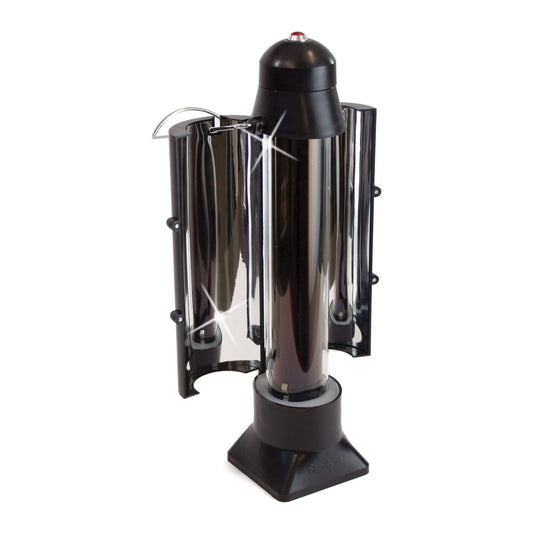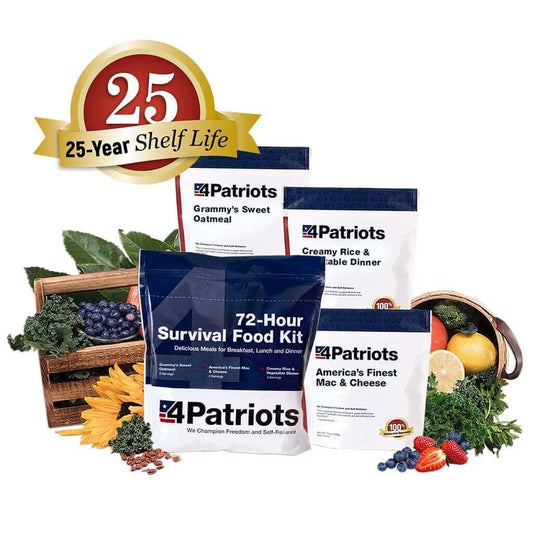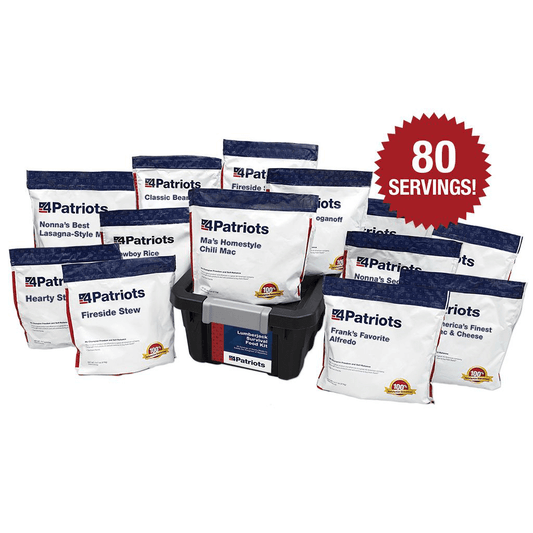
Can you guess the best (& WORST) berries to eat in the wild?

Last summer, two hikers got lost while navigating the rugged Downey Creek trail in Washington state.
Buster Cabe, age 64, and David James, 59, had planned on a weeklong hike. But they took a chance on a shortcut and then couldn’t find their way.
Before long, they were running out of food. And James had it even worse. He lost gear in a fire, including his sleeping bag and a shoe.
They knew their only chance was to split up. While James sat tight, Cabe continued on and tried to find help.
Berries and ants do the trick
While search and rescue choppers looked for the hikers, Cabe survived on berries he found. As well as bugs, including ants.
“I ate blueberries,” Cabe said. “They’ve got more energy than the red ones. Blue huckleberries, I ate them. And I ate some ants.”
Cabe said the ants he consumed were not bad tasting. And he knew they would provide some much-needed protein.
But after being rescued, he offered a warning for anyone who might try the same thing while lost. “(Ants) taste like SweeTarts,” he said. “Except they’ll bite you in the tongue, so eat them fast.”
Berries to avoid
If you were lost in the wilderness – perhaps during a hike or after being forced to bug out – would you know which berries are safe to eat and which aren’t?
It can be pretty tricky if you don’t know what you’re doing. Let’s take a look at a few berries you definitely DON’T want to consume.
Holly berries contain an alkaloid called theobromine. Eating a few probably won’t hurt you. But if you eat a bunch of them, you could get ill.
Ivy berries are poisonous if eaten in quantities. Fortunately, they taste bitter so it’s unlikely anyone would eat too many unless they were starving.
Yew berries are not harmful by themselves, but their seeds are poisonous. The seeds contain alkaloids called taxanes. These seeds have been known to cause sudden death.
Mistletoe is best left hanging above you around the holidays. Its pink and white berries are poisonous. Some who have eaten a bunch of mistletoe have suffered convulsions, blurred vision, stomach cramps and diarrhea.
Jerusalem cherry is a beautiful plant, but its berries contain solanocapsine. This toxin can cause gastric problems and vomiting.
Berries to enjoy
Some berries are perfectly fine to eat and healthy for you. If you know which ones are safe, they can keep you going until you find your way to shelter.
Partridgeberries are dark red – similar to cranberries – and very tart. They contain plenty of natural pectin, which is used as a setting agent in jams and jellies.
Manzanita berries are silvery-green and oval-shaped. These berries have long been used to make cider. Their less-than-ideal taste can be overcome by grinding them and using the powdered fruit.
Wintergreen berries are red, while their leaves are dark green and waxy. The berries are safe to eat. One outdoors author even recommends using them to make ice cream and muffins.
Cold weather brings challenges
The lost hikers I mentioned earlier had one thing going for them. It was summer, so they didn’t have to worry about freezing to death before they found food.
But what if you have to bug out in the winter and find yourself in the wilderness without food. After finding or building a temporary shelter, you might have to live off the land until you get settled in a safe place.
Which winter plants are safe to eat and which ones aren’t? Hopefully you’ll have a book in your bug-out bag that will help make that determination.
Such as Edible Wild Plants: A North American Field Guide to Over 200 Natural Foods. Or The Scout’s Guide to Wild Edibles: Learn How to Forage, Prepare & Eat 40 Wild Foods.
If not, here are a few things to remember regarding wild plants that are safe to eat.
Edible winter plants
Rose hips have bright red fruits containing an average of eight to 12 pale yellow seeds per fruit. These rose hips are tangy and sweet, and a good source of Vitamin C and E.
Persimmon produces a fruit that tastes delicious if it’s ripe and terrible if it isn’t. Ironically, the better it looks, the worse it tastes. The key is to wait until it’s wrinkled and gooey. It tastes sweet and contains Vitamin C.
Barberries should be pulled carefully from thorny branches. These immune system-boosting berries can be eaten raw or steeped in hot water to make a tea.
Other edible winter plants that don’t contain berries or fruits include cattail rootstock, pinecone nuts, wild onion tops and bulbs, maple syrup from maple trees, chickweed leaves and stems, mullein leaves, chicory leaves, hickory nuts, acorns and black walnuts.
But you can never go wrong with berries, as long as you know which ones are safe.
Featured Products
- Regular price
- $699.95
- Regular price
-
- Sale price
- $699.95
- Unit price
- per
- Regular price
- $2,999.95
- Regular price
-
- Sale price
- $2,999.95
- Unit price
- per
- Regular price
- From $29.95
- Regular price
-
- Sale price
- From $29.95
- Unit price
- per
- Regular price
- From $29.95
- Regular price
-
- Sale price
- From $29.95
- Unit price
- per
- Regular price
- $2,499.95
- Regular price
-
- Sale price
- $2,499.95
- Unit price
- per
- Regular price
- $499.95
- Regular price
-
- Sale price
- $499.95
- Unit price
- per
- Regular price
- $999.95
- Regular price
-
- Sale price
- $999.95
- Unit price
- per
- Regular price
- From $29.95
- Regular price
-
- Sale price
- From $29.95
- Unit price
- per
- Regular price
- $2,999.95
- Regular price
-
- Sale price
- $2,999.95
- Unit price
- per
- Regular price
- From $2,796.95
- Regular price
-
$8,390.95 - Sale price
- From $2,796.95
- Unit price
- per
- Regular price
- $4,999.95
- Regular price
-
- Sale price
- $4,999.95
- Unit price
- per
- Regular price
- From $129.95
- Regular price
-
$259.95 - Sale price
- From $129.95
- Unit price
- per
- Regular price
- $847.95
- Regular price
-
$897.95 - Sale price
- $847.95
- Unit price
- per
- Regular price
- $1,999.95
- Regular price
-
- Sale price
- $1,999.95
- Unit price
- per
- Regular price
- $279.95
- Regular price
-
- Sale price
- $279.95
- Unit price
- per
- Regular price
- From $69.95
- Regular price
-
- Sale price
- From $69.95
- Unit price
- per
- Regular price
- $29.95
- Regular price
-
- Sale price
- $29.95
- Unit price
- per
- Regular price
- $849.95
- Regular price
-
- Sale price
- $849.95
- Unit price
- per
- Regular price
- $249.95
- Regular price
-
- Sale price
- $249.95
- Unit price
- per
- Regular price
- $199.95
- Regular price
-
- Sale price
- $199.95
- Unit price
- per
- Regular price
- $129.95
- Regular price
-
- Sale price
- $129.95
- Unit price
- per
- Regular price
- $114.95
- Regular price
-
- Sale price
- $114.95
- Unit price
- per
- Regular price
- $69.90
- Regular price
-
- Sale price
- $69.90
- Unit price
- per
- Regular price
- $19.95
- Regular price
-
- Sale price
- $19.95
- Unit price
- per
- Regular price
- $3,499.95
- Regular price
-
- Sale price
- $3,499.95
- Unit price
- per
























